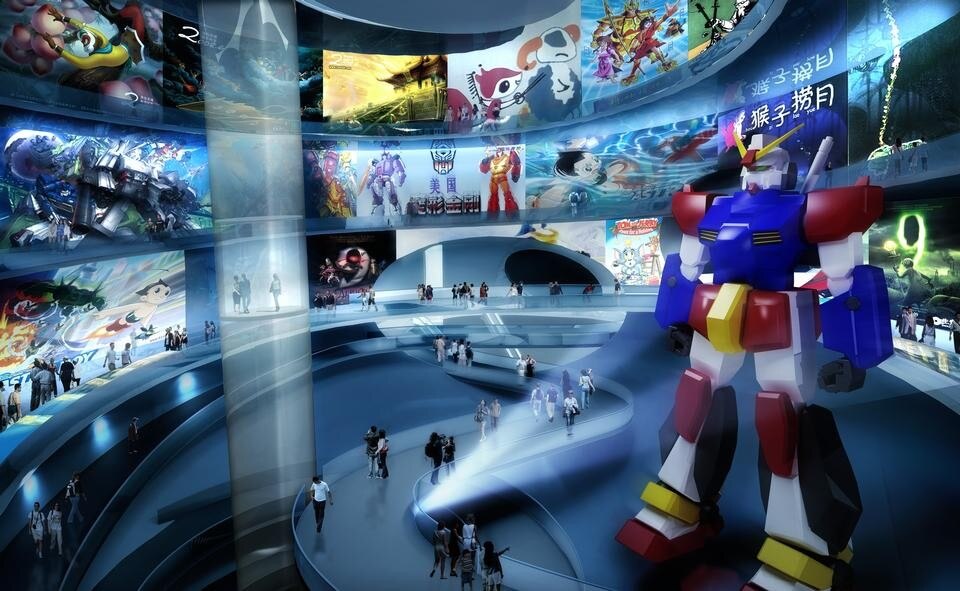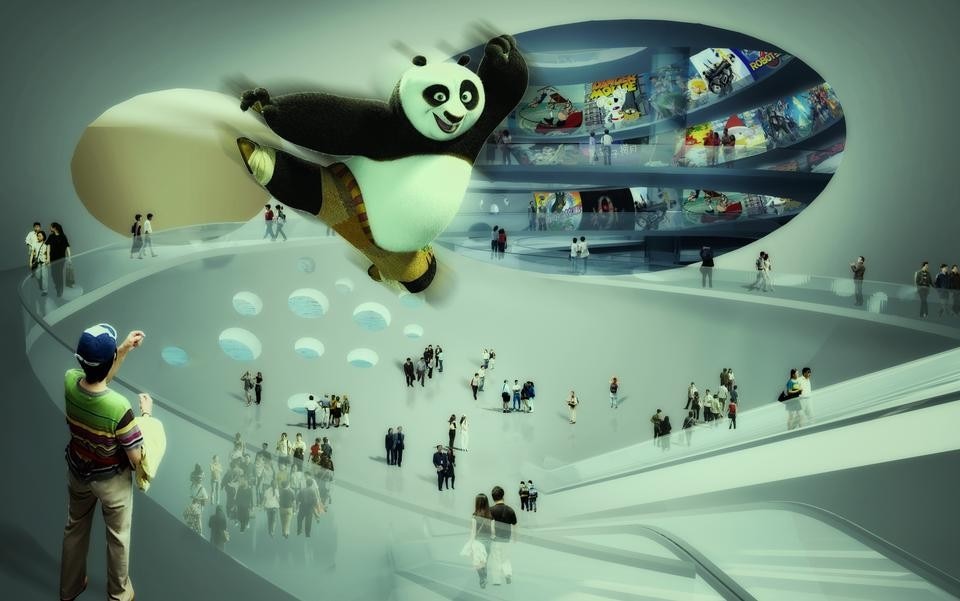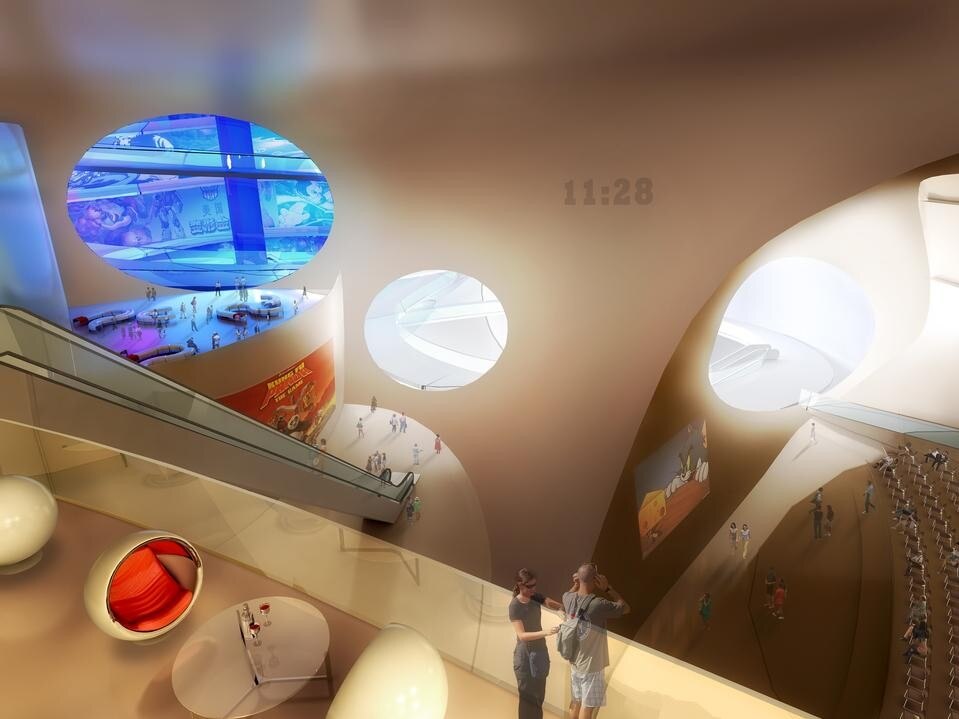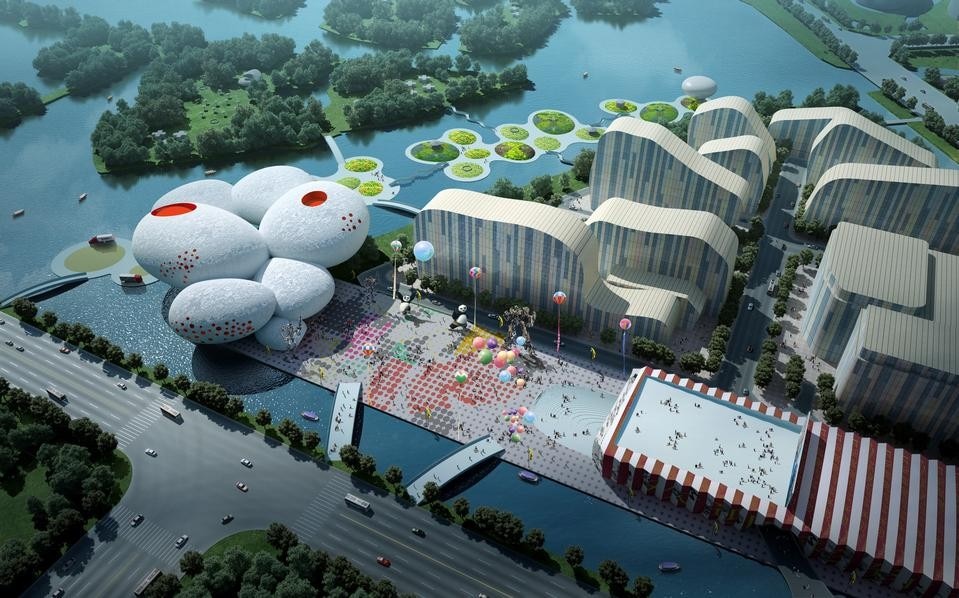Comics and animations have long been considered a form of entertainment for the younger generations but develop more and more into a sophisticated art form. The initiative for a museum especially for this relatively recent art form creates a platform which will unite the worlds of art and entertainment. By using one of the cartoon's prime characteristics—the speech balloon—the building will instantly be recognized as place for cartoons, comics and animations. The neutral speech balloon becomes 3D.
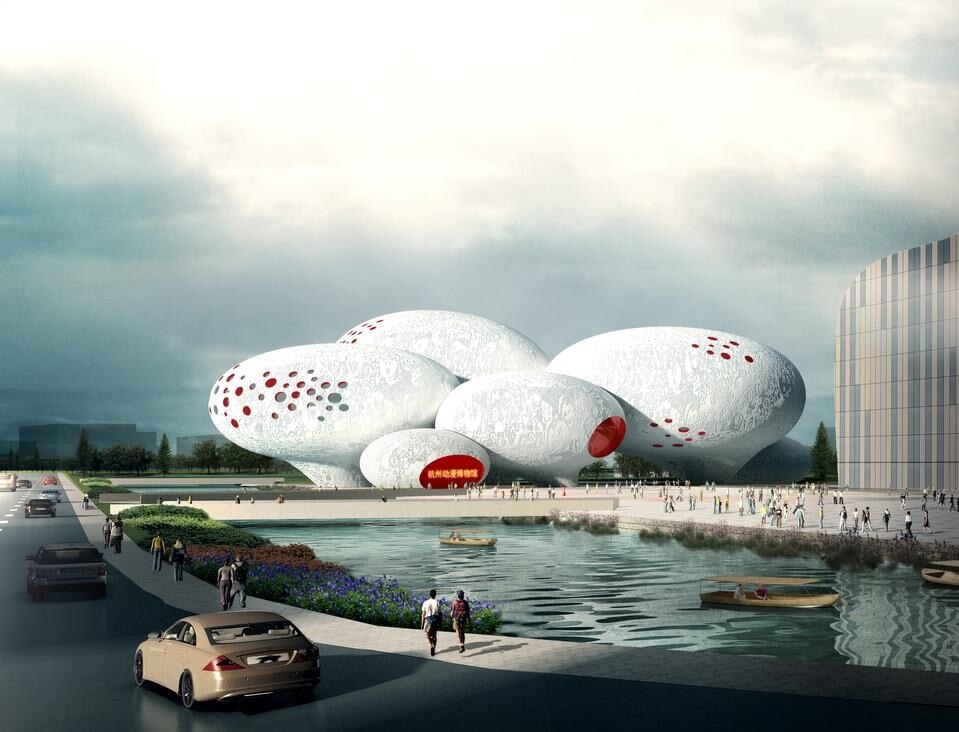
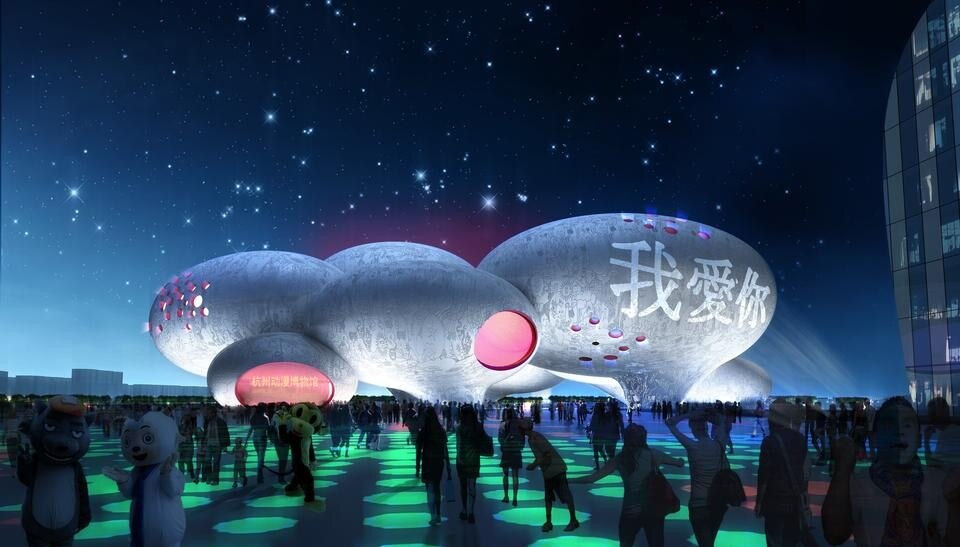
Hangzhou is a metropolis with 6.4 million inhabitants 180 km southwest of Shanghai. The Museum will become a new focal point on the less populated southern side of Qiantang river. The CCAM will consolidate the city's leading position as China's capital of the animation industry. The new Museum will be the icon of a larger development, the Comic and Animation Centre. It comprises a series of hill-shaped buildings containing offices, a hotel and a conference centre of which the first phase is close to completion.
By using one of the cartoon's prime characteristics—the speech balloon—the building will instantly be recognized as place for cartoons, comics and animations.
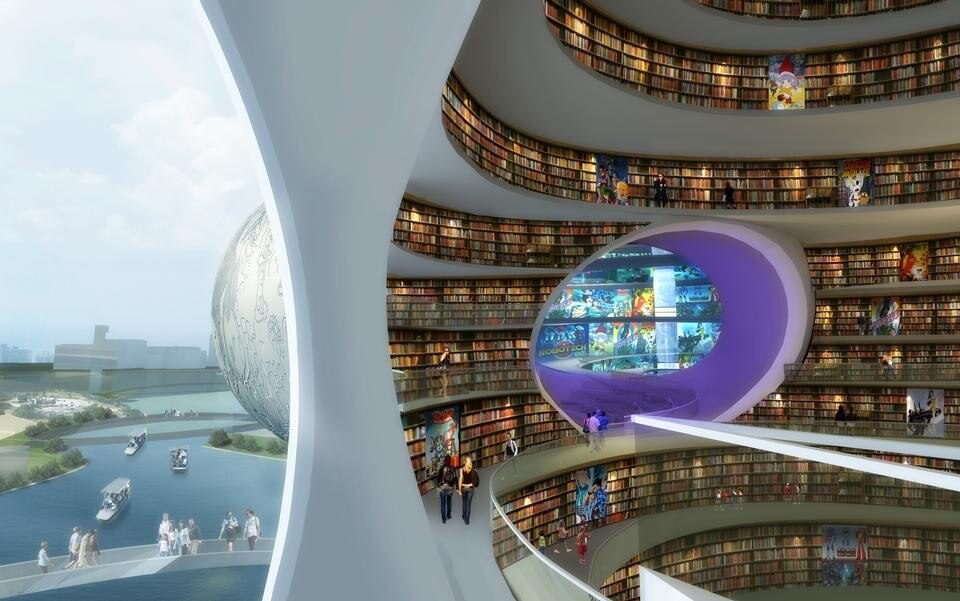
MVRDV won the competition of EMBT, Atelier Bow Wow, Tongji Institute of Architectural Design and Tsinghua Architectural Design. The MVRDV team consists further of Kossman.deJong exhibition architects, local architect Zhubo Architectural & Engineering Design, Arup engineers and JongeMeesters graphic design.
